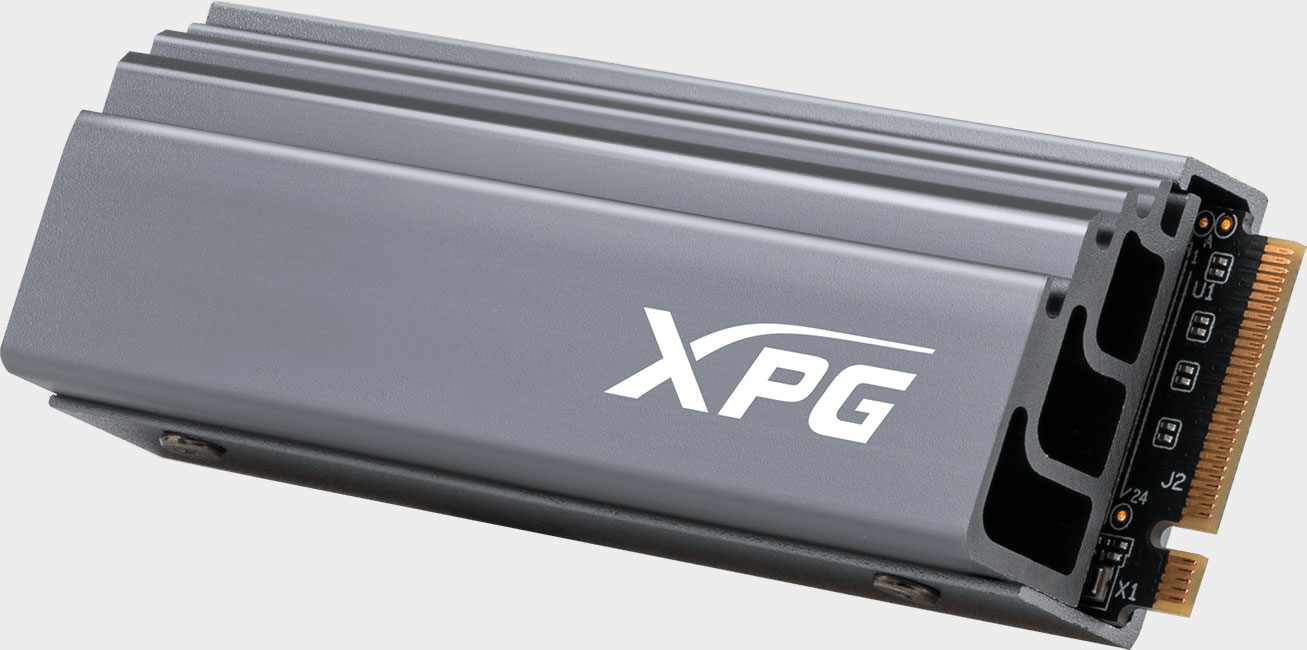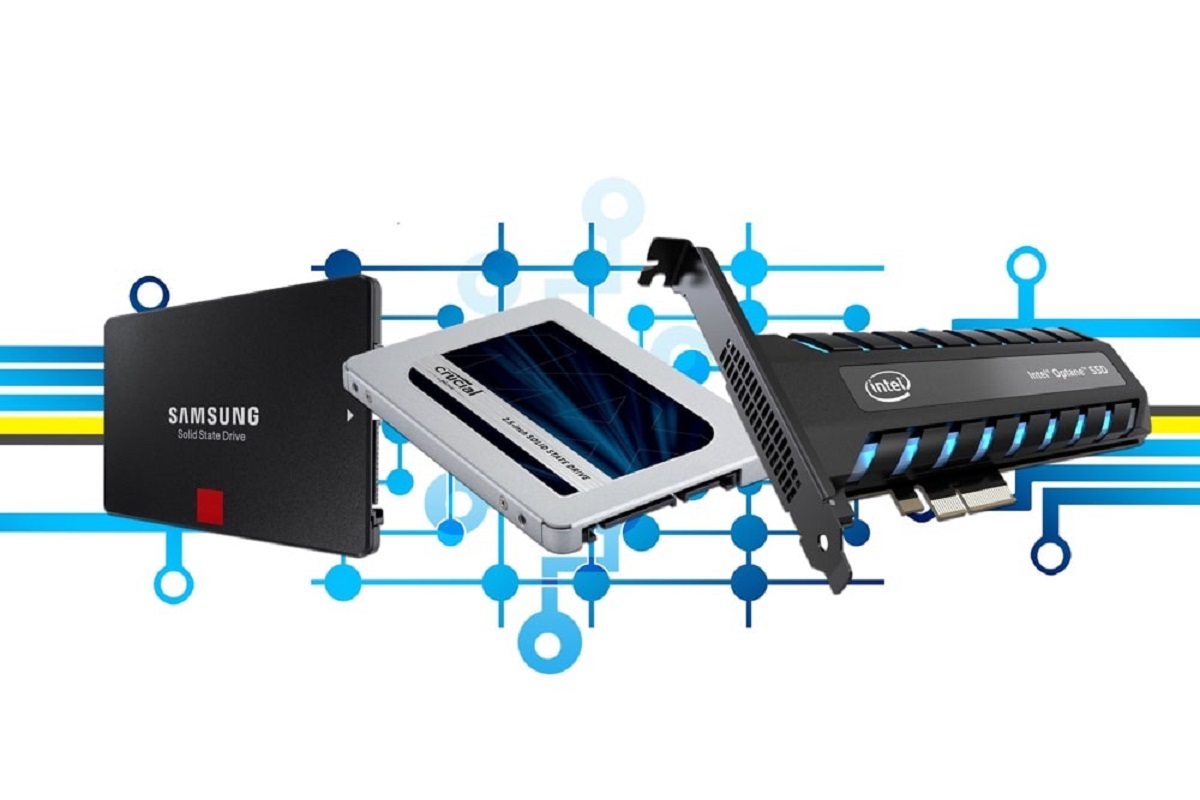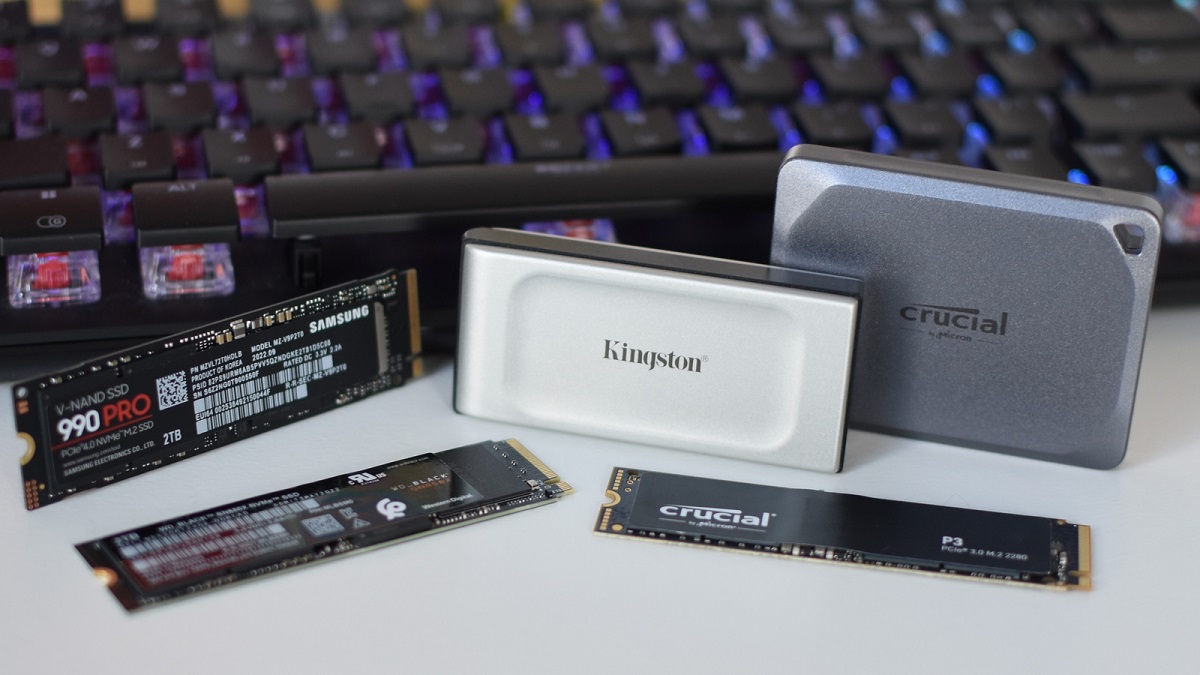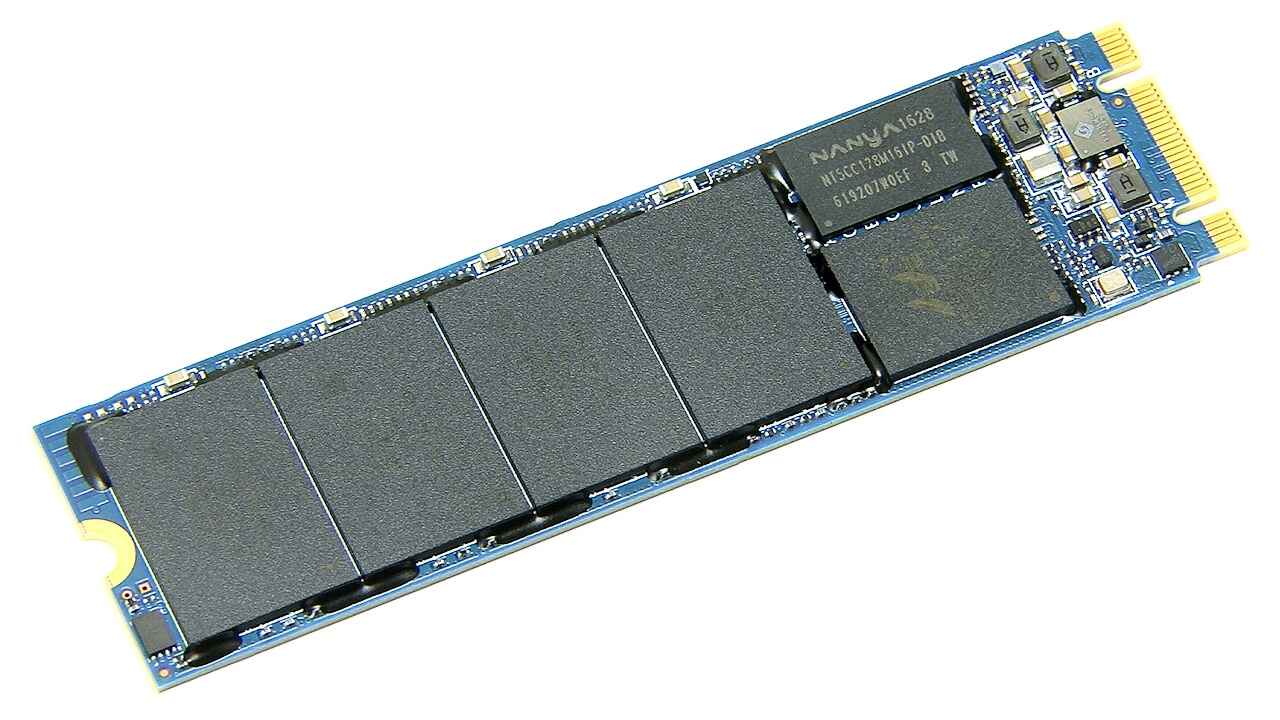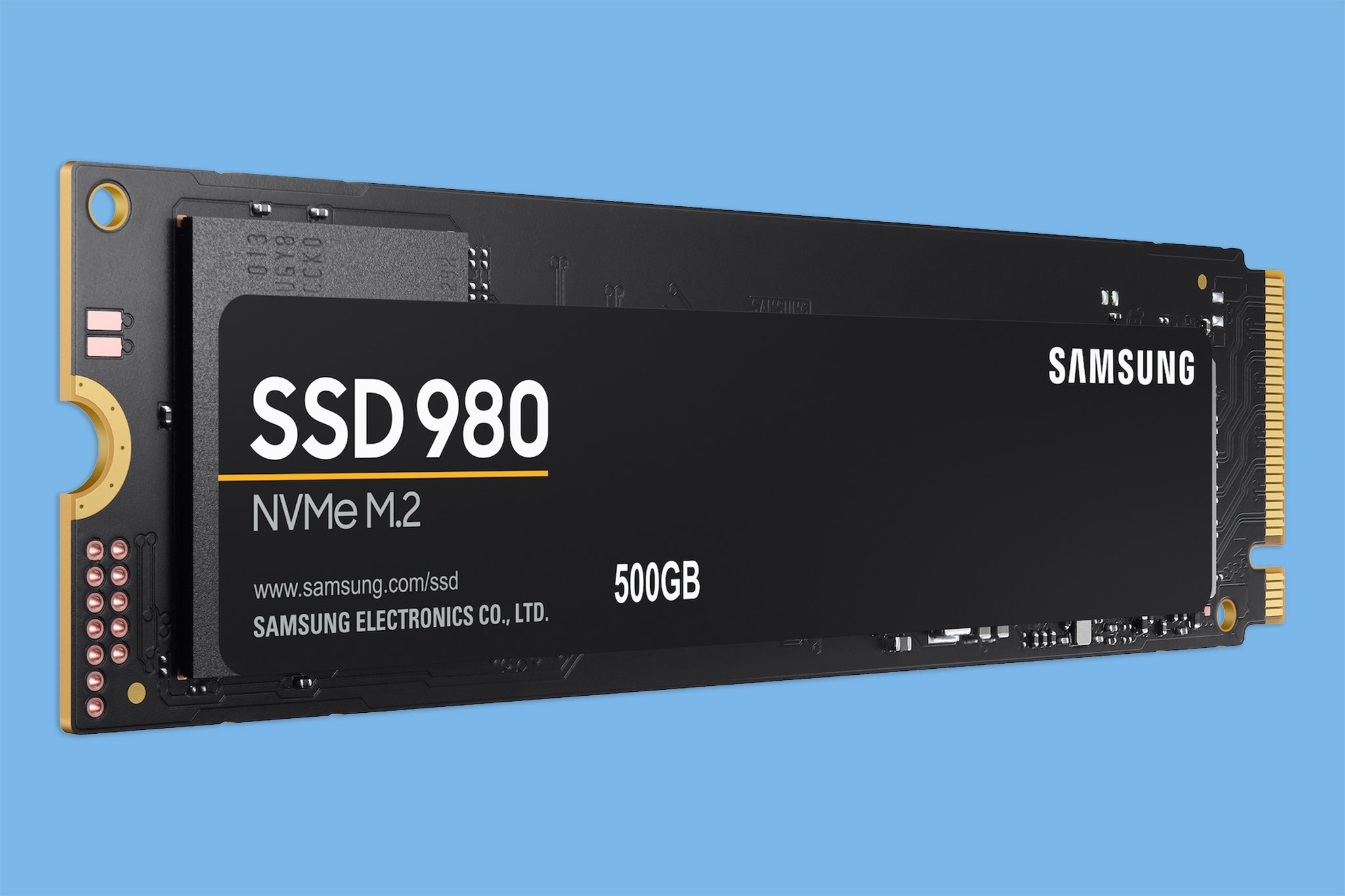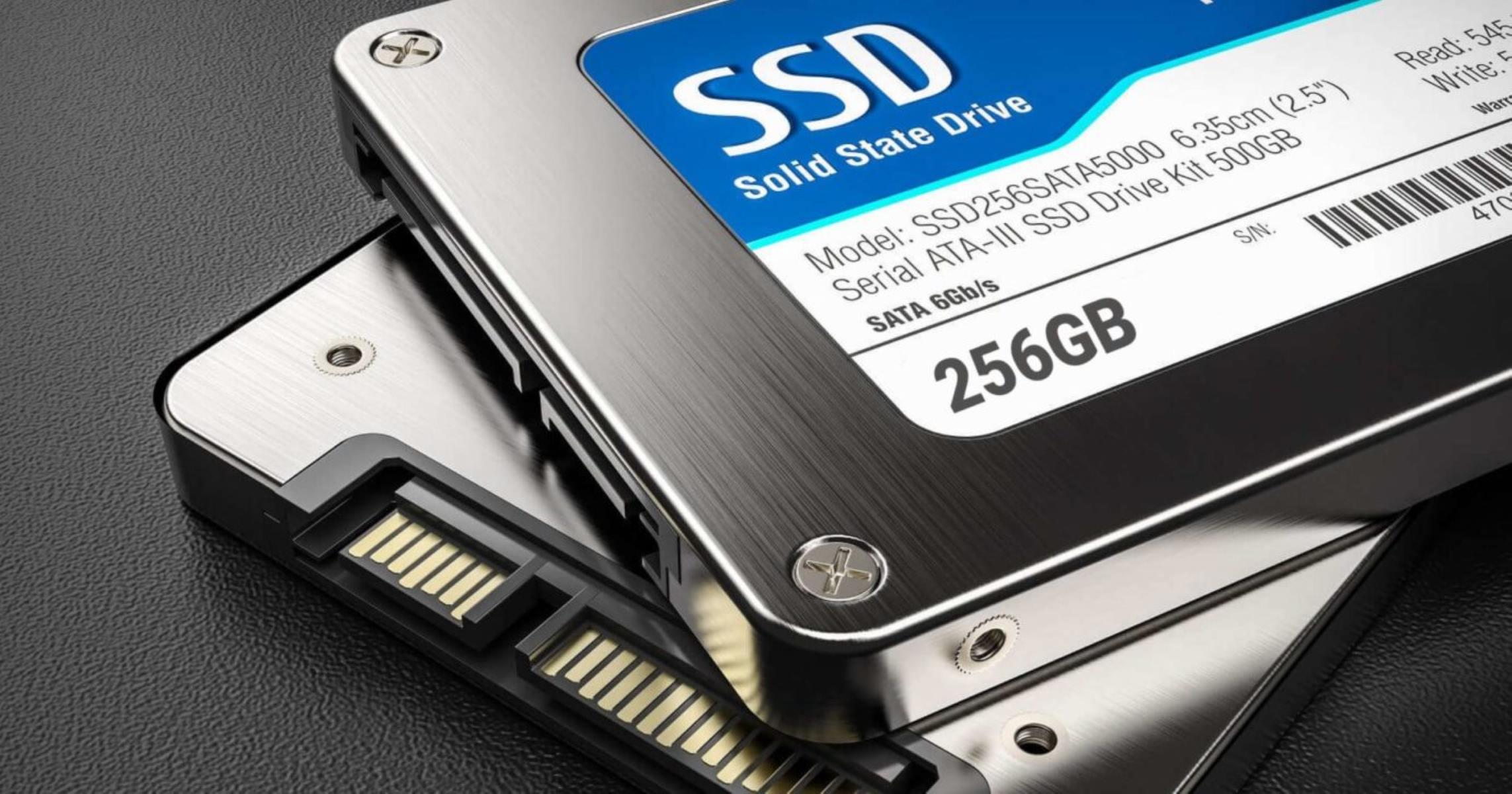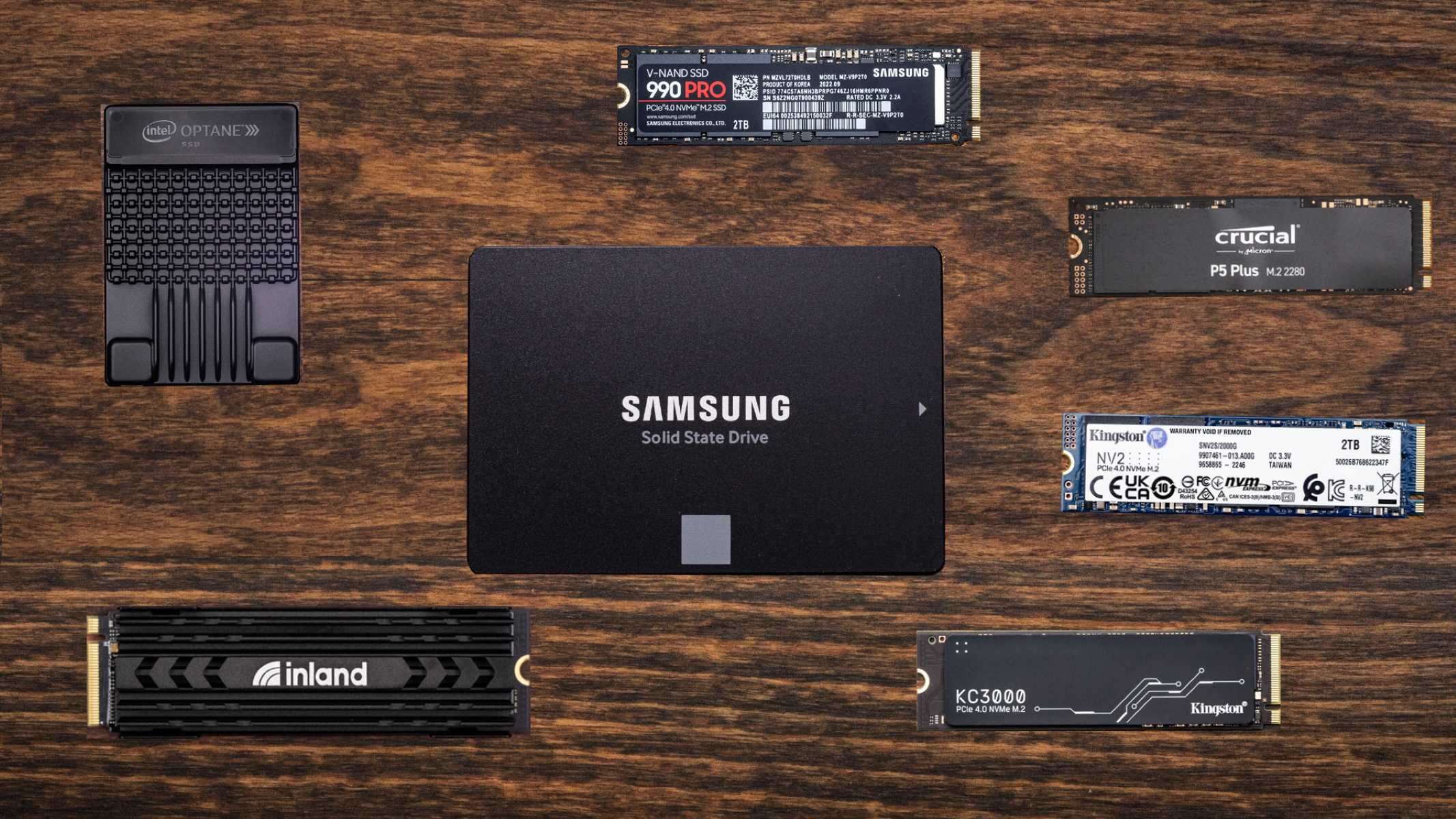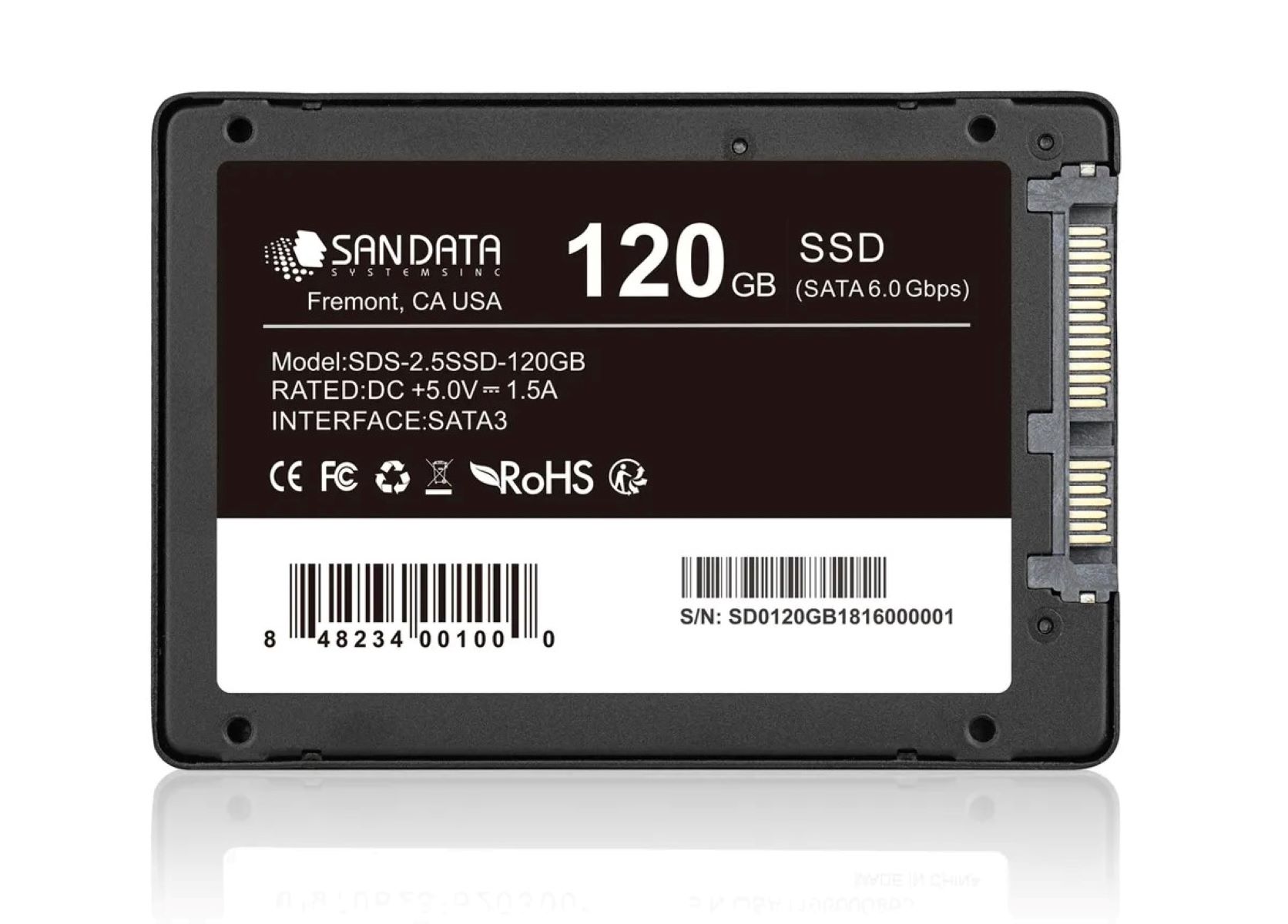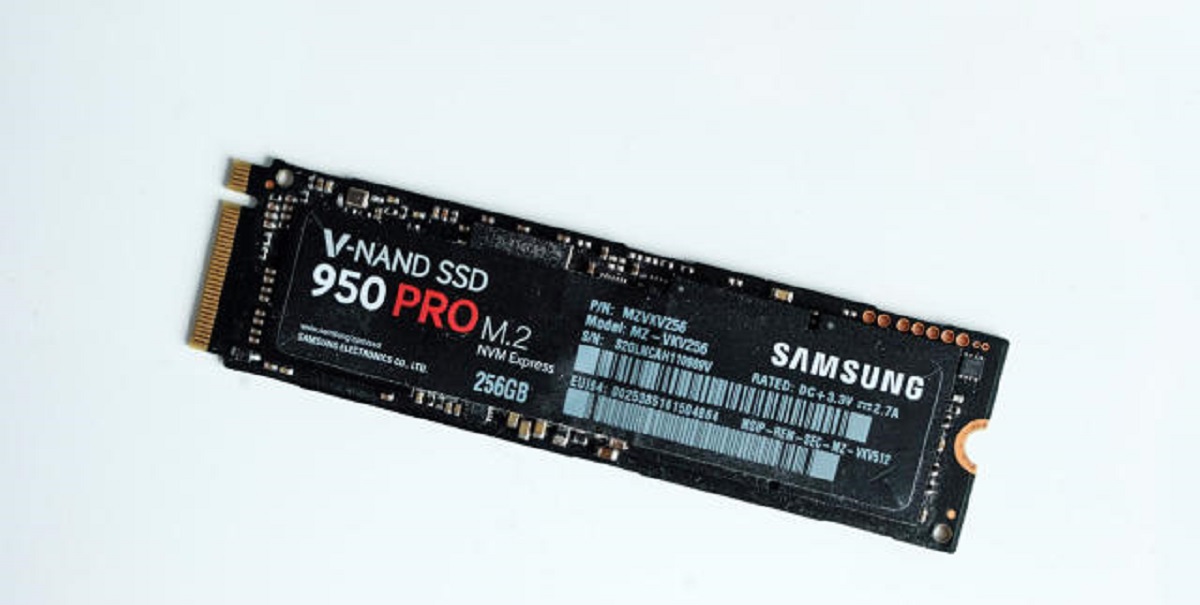Introduction
Welcome to the world of blazing-fast storage! In this article, we will delve into the realm of M.2 SSDs, the superheroes of storage technology. Whether you’re a tech enthusiast, gamer, or professional in need of lightning-fast data access, M.2 SSDs offer unparalleled performance and speed.
Gone are the days of traditional hard drives and even the slower SATA-based SSDs. The rise of M.2 SSDs has revolutionized storage solutions, providing a significant boost in both speed and efficiency. With a compact form factor and advanced interface, M.2 SSDs have become the go-to choice for those seeking ultimate performance.
But what exactly is an M.2 SSD, and how does it work? What factors should you consider when looking for the fastest M.2 SSD? And which options on the market offer the best speed and value? Don’t worry – we’ve got you covered! In this article, we’ll answer these questions and delve into the exciting world of M.2 SSDs.
So, gear up and get ready to explore the world of lightning-fast storage as we dive deep into the world of M.2 SSDs. Whether you’re a DIY PC builder looking to optimize your system, a content creator in need of fast rendering speeds, or a gamer seeking reduced loading times, understanding the ins and outs of M.2 SSDs is a must.
So, without further ado, let’s embark on this journey to discover the fastest M.2 SSDs on the market and unlock a whole new level of storage performance!
What is an M.2 SSD?
An M.2 SSD, also known as Next Generation Form Factor (NGFF) SSD, is a modern storage device designed to deliver lightning-fast performance in a small and compact form factor. Unlike traditional hard drives or SATA-based SSDs, M.2 SSDs utilize the PCIe (Peripheral Component Interconnect Express) interface to achieve incredible speeds.
The M.2 form factor was initially developed to address the limitations of the traditional 2.5-inch SSDs and provide a more efficient storage solution. It comes in various lengths and widths, making it compatible with a wide range of systems, including laptops, desktops, and even compact devices like ultrabooks and mini PCs.
One of the key features of M.2 SSDs is their small size. They are significantly smaller than traditional hard drives, which allows for more flexibility when it comes to system design and layout. The compact form factor also reduces the weight of the device, making it ideal for portable devices where every ounce matters.
But what sets M.2 SSDs apart from their predecessors is their remarkable speed. By leveraging the PCIe interface, M.2 SSDs can achieve astonishing read and write speeds, significantly reducing file transfer times, boot times, and application loading times. This makes them perfect for demanding tasks that require quick access to large amounts of data, such as gaming, multimedia editing, and professional workloads.
M.2 SSDs are available in different configurations, including SATA-based and NVMe (Non-Volatile Memory express)-based options. While both provide a significant performance boost compared to traditional hard drives, NVMe-based M.2 SSDs are the true speed demons. NVMe utilizes the PCIe lanes directly, eliminating the bottlenecks associated with the SATA interface and unlocking the full potential of the SSD.
In terms of storage capacity, M.2 SSDs offer flexibility, with options ranging from a few hundred gigabytes to several terabytes. This allows users to choose the capacity that best fits their needs, whether it’s for everyday computing tasks or storing large media files.
Overall, M.2 SSDs are the epitome of speed, performance, and compactness in the world of storage devices. Whether it’s improving system responsiveness or reducing load times in resource-intensive applications, M.2 SSDs have become a game-changer in the realm of storage technology.
How do M.2 SSDs work?
Understanding the inner workings of M.2 SSDs will shed light on why they are so fast and efficient. Unlike traditional hard drives that rely on spinning disks and magnetic heads, M.2 SSDs leverage solid-state technology to store and retrieve data.
At the heart of an M.2 SSD are NAND flash memory chips. These chips, often in the form of 3D NAND, store data in a non-volatile manner, meaning the information remains intact even when the power is disconnected. This is in contrast to volatile memory like RAM, which loses its contents once the power is cut off.
M.2 SSDs use a controller that acts as the interface between the NAND flash memory and the rest of the system. The controller manages the flow of data, ensuring efficient read and write operations, error correction, and wear-leveling algorithms to maximize the lifespan of the SSD.
When data needs to be read from or written to the M.2 SSD, the controller communicates with the NAND flash memory chips. When reading data, the controller retrieves the requested data from the appropriate NAND chips and transfers it to the system for processing. When writing data, the controller accepts the incoming data and stores it in the available NAND chips.
To achieve high-speed data transfers, M.2 SSDs utilize the PCIe interface. The PCIe lanes provide a wider and faster data pathway compared to the traditional SATA interface. NVMe, or Non-Volatile Memory Express, is a protocol specifically designed for PCIe-based SSDs, allowing for even faster and more efficient communication between the SSD and the system.
The use of PCIe lanes, along with the NVMe protocol, enables M.2 SSDs to achieve incredibly fast read and write speeds. This translates into reduced loading times for applications, faster boot-up times, and improved overall system responsiveness.
In addition to speed, M.2 SSDs also offer other advanced features such as TRIM support, which helps to optimize performance by efficiently managing the SSD’s data storage. They also support features like power-loss protection, which ensures that data remains intact in case of sudden power failure.
Overall, M.2 SSDs work by utilizing solid-state technology, NAND flash memory chips, and a sophisticated controller to deliver lightning-fast performance and reliable storage. Their use of the PCIe interface and NVMe protocol further enhances the speed and efficiency of data transfer, making them an ideal choice for those seeking ultimate storage performance.
Factors to consider when choosing an M.2 SSD
With a multitude of M.2 SSD options available in the market, selecting the right one can be a daunting task. To help you make an informed decision, here are some important factors to consider when choosing an M.2 SSD:
1. Capacity: Determine your storage requirements based on your usage. M.2 SSDs are available in various capacities, ranging from 128GB to several terabytes. Consider the size of your files, the number of applications you will be storing, and any future expansion needs.
2. Speed: Look for the performance specifications of the M.2 SSD. The speed of an SSD is determined by its read and write speeds, which are usually indicated in the product specifications. Consider whether you need high-speed performance for demanding tasks like gaming or professional workloads.
3. Interface: Check the interface compatibility of the M.2 SSD with your system. Most modern M.2 SSDs use the PCIe interface, but there are also SATA-based options available. Ensure that your motherboard supports the interface of the SSD you are considering.
4. Form Factor: Verify the physical dimensions of the M.2 SSD to ensure it fits your system. M.2 SSDs come in different lengths and widths, such as 2280 (22mm by 80mm) and 2242 (22mm by 42mm). Determine the available space in your system and choose the appropriate form factor.
5. Endurance and Reliability: Consider the endurance rating or Total Bytes Written (TBW) of the M.2 SSD. This indicates the maximum amount of data that can be written to the drive over its lifespan. High-quality SSDs often have higher endurance ratings, ensuring durability and reliability.
6. Price: Set a budget for your M.2 SSD purchase. Prices can vary depending on the capacity, brand, and performance of the SSD. Compare different options within your budget to find the best balance between performance and cost.
7. Brand and Warranty: Choose reputable brands that have a good track record in producing reliable SSDs. Consider the warranty offered by the manufacturer, as it reflects their confidence in the product. Longer warranties provide peace of mind and assurance of support in case of any issues.
8. Customer Reviews: Read customer reviews and feedback to gain insights into the real-world performance and reliability of the M.2 SSD. Reviews can provide valuable information about the SSD’s compatibility, speed, and overall user satisfaction.
9. Future Upgrades: Consider your future upgrade plans and the compatibility of the M.2 SSD with upcoming technologies. Check if the SSD offers support for features like PCIe Gen4 or PCIe Gen5, which may become more prevalent in newer systems.
By taking these factors into account, you can confidently make an informed decision when selecting an M.2 SSD that meets your specific requirements and provides the best performance and value for your storage needs.
Comparison of the fastest M.2 SSDs on the market
The market is flooded with M.2 SSD options, each claiming to be the fastest and most reliable. To help you narrow down your choices, let’s compare some of the top contenders in terms of speed and performance:
1. Samsung 980 PRO: The Samsung 980 PRO is a PCIe 4.0 NVMe M.2 SSD that offers incredible sequential read and write speeds of up to 7,000MB/s and 5,100MB/s respectively. It boasts high endurance and is available in capacities ranging from 250GB to 2TB, making it an excellent choice for gamers and content creators demanding top-tier performance.
2. Western Digital Black SN850: The WD Black SN850 is another PCIe 4.0 NVMe M.2 SSD that competes with the best in terms of speed. With sequential read and write speeds reaching up to 7,000MB/s and 5,300MB/s respectively, it delivers exceptional performance for demanding workloads. Its capacities range from 500GB to 2TB, making it suitable for enthusiasts and professionals.
3. Seagate FireCuda 520: The FireCuda 520 is a PCIe 4.0 NVMe M.2 SSD from Seagate. With read and write speeds of up to 5,000MB/s and 4,400MB/s respectively, it offers excellent performance while being more affordable compared to other flagship options. It’s available in capacities ranging from 500GB to 2TB, making it a great choice for gamers and power users.
4. Corsair MP600 PRO: The Corsair MP600 PRO is a PCIe 4.0 NVMe M.2 SSD that boasts impressive sequential read and write speeds of up to 7,100MB/s and 6,800MB/s respectively. It utilizes Toshiba’s 3D TLC NAND technology and comes in capacities ranging from 1TB to 2TB. With its high performance and durability, it’s an excellent option for demanding workloads.
5. Kingston KC2500: The Kingston KC2500 is a PCIe 3.0 NVMe M.2 SSD that offers impressive speeds at a more affordable price point. With sequential read and write speeds of up to 3,500MB/s and 2,900MB/s respectively, it provides reliable performance for everyday tasks and gaming. It comes in capacities ranging from 250GB to 2TB, catering to a wide range of storage needs.
These are just a few examples of the fastest M.2 SSDs available, each offering exceptional performance and speed in their own right. When choosing among these options, consider factors such as your specific storage requirements, budget, and compatibility with your system. Remember, the fastest SSD may not always be the best for your particular use case, so be sure to evaluate your needs carefully.
Benchmark results of the top M.2 SSDs in speed tests
To gauge the real-world performance of the fastest M.2 SSDs, let’s delve into some benchmark results. These tests provide valuable insights into the actual speed and performance of the SSDs in various scenarios:
1. CrystalDiskMark: CrystalDiskMark is a popular benchmarking tool used to measure sequential and random read/write speeds of storage devices. In tests using this tool, the Samsung 980 PRO consistently achieves outstanding results, surpassing sequential read speeds of 7,000MB/s and sequential write speeds of 5,000MB/s, showcasing its industry-leading PCIe 4.0 performance.
2. AS SSD Benchmark: The AS SSD Benchmark focuses on measuring real-world file transfer speeds, including small file and 4K performance. The Western Digital Black SN850 consistently delivers remarkable results in both sequential and random read/write speeds, showcasing its capability to handle intense workloads efficiently.
3. Anvil’s Storage Utilities: Anvil’s Storage Utilities is a comprehensive benchmarking tool that evaluates both read and write performance, as well as IOPS (Input/Output Operations Per Second). The Seagate FireCuda 520 demonstrates exceptional performance in these tests, particularly in random read/write speeds, making it an attractive choice for users seeking fast and responsive storage solutions.
4. ATTO Disk Benchmark: The ATTO Disk Benchmark measures disk performance across various file sizes, providing insights into performance at different workloads. The Corsair MP600 PRO consistently delivers remarkable results in both sequential read and write speeds, showcasing its ability to handle large file transfers effectively.
5. PCMark 10 Storage Test: The PCMark 10 Storage Test simulates real-world usage scenarios, including boot times, app loading, and game loading. The Kingston KC2500 performs exceptionally well in these tests, demonstrating its ability to deliver snappy system responsiveness and swift application launches.
It’s important to note that benchmark results may vary depending on the system configuration, firmware versions, and other factors. Additionally, different benchmarking tools may produce slightly different results. Therefore, it is recommended to refer to multiple benchmarks and consider real-world feedback from users to get a comprehensive understanding of an M.2 SSD’s performance.
These benchmark results highlight the exceptional performance of the top M.2 SSDs, allowing users to choose the option that best suits their specific needs, whether it’s for gaming, content creation, or professional workloads.
Price vs. performance: Which fast M.2 SSD offers the best value?
When it comes to choosing the right M.2 SSD, finding the perfect balance between price and performance is essential. While top-of-the-line SSDs offer exceptional speed and reliability, they often come with a higher price tag. However, there are options available that provide great value for your money. Let’s explore some M.2 SSDs that offer a compelling combination of speed and affordability:
1. WD Blue SN550: The WD Blue SN550 is a PCIe 3.0 NVMe M.2 SSD that delivers impressive performance at an affordable price. While not the fastest SSD on the market, it offers solid sequential read and write speeds of up to 2,400MB/s and 1,750MB/s respectively. With capacities ranging from 250GB to 2TB, it presents a budget-friendly option for users who prioritize value without compromising too much on speed.
2. Crucial P2: The Crucial P2 is another PCIe 3.0 NVMe M.2 SSD that strikes a balance between price and performance. With sequential read and write speeds of up to 2,400MB/s and 1,900MB/s respectively, it offers reliable performance for everyday computing tasks. Available in capacities ranging from 250GB to 2TB, it provides a cost-effective storage solution for those seeking a good balance of speed and value.
3. Kingston A2000: The Kingston A2000 is a PCIe 3.0 NVMe M.2 SSD that offers a combination of affordability and performance. With sequential read and write speeds of up to 2,200MB/s and 2,000MB/s respectively, it provides solid performance for a budget-friendly price. It comes in capacities ranging from 250GB to 1TB, making it suitable for users looking for a reliable and cost-effective SSD.
4. Silicon Power A80: The Silicon Power A80 is a PCIe 3.0 NVMe M.2 SSD that offers competitive speed and value. With sequential read and write speeds of up to 3,400MB/s and 3,000MB/s respectively, it delivers impressive performance for the price. It comes in capacities ranging from 256GB to 2TB, providing options for various storage needs while keeping affordability in mind.
While these SSDs may not offer the highest performance in terms of read and write speeds compared to the flagship models, they provide excellent value for money. They still deliver significant speed improvements over traditional hard drives and offer reliable performance for everyday computing tasks, gaming, and content creation at a more accessible price point.
Ultimately, the best value M.2 SSD depends on your specific requirements and budget. Consider factors such as your storage needs, the performance levels you require, and the available budget. It’s also worth checking for discounts, sales, and promotions that may provide an opportunity to get a high-performance M.2 SSD at an even better value.
By carefully evaluating these factors, you can find an M.2 SSD that offers a great balance of speed and affordability, allowing you to harness the benefits of fast storage without breaking the bank.
The future of fast M.2 SSD technology
The world of technology is ever-evolving, and the future holds exciting possibilities for fast M.2 SSD technology. As storage demands continue to grow and the need for faster data access becomes more critical, several advancements are on the horizon:
1. PCIe 5.0 and Beyond: The PCIe 5.0 interface is already being adopted by some high-end SSDs, offering even faster data transfer rates. With double the bandwidth of PCIe 4.0, PCIe 5.0 has the potential to unlock new levels of speed and performance in M.2 SSDs. Furthermore, future iterations, such as PCIe 6.0, are already being developed, promising even higher speeds and improved efficiency.
2. Enhanced Capacities: As NAND flash technology continues to advance, we can expect to see larger capacities in M.2 SSDs. Increasing capacities will cater to the growing demand for storage space, allowing users to store more data, applications, and media files on their SSDs without compromising performance.
3. Improved Efficiency: With advancements in NAND flash memory, SSD controllers, and firmware, future M.2 SSDs will become more power-efficient. Reduced power consumption not only contributes to longer battery life in portable devices but also helps in reducing heat generation and improving overall system stability.
4. Advanced NAND Technologies: Future M.2 SSDs may incorporate newer NAND technologies, such as QLC (Quad-Level Cell) and PLC (Penta-Level Cell). These technologies allow for higher storage densities, offering even larger capacities in a single drive. While these technologies may have slightly slower write endurance compared to traditional TLC (Triple-Level Cell), they provide a cost-effective solution for consumers with high-capacity storage needs.
5. Enhanced Data Security: As data security becomes increasingly important, future M.2 SSDs may incorporate advanced encryption and security features, such as hardware encryption and self-encrypting drives (SEDs). These features can help protect sensitive data from unauthorized access and provide peace of mind for users.
6. AI-Driven Optimization: Artificial intelligence-powered algorithms are being developed to enhance SSD performance and efficiency. These algorithms can analyze usage patterns, predict data access requirements, and optimize resource allocation, resulting in better overall performance and responsiveness.
As technology continues to advance, M.2 SSDs are poised to become even faster, more efficient, and capable of handling larger workloads. These advancements will benefit a wide range of users, including gamers, content creators, professionals, and everyday consumers.
By staying up to date with the latest developments and upgrading to newer generations of M.2 SSDs, users can unlock the full potential of their systems, enjoying faster boot times, reduced load times, and improved overall productivity.
Conclusion
M.2 SSDs have undoubtedly revolutionized the world of storage technology, delivering lightning-fast speeds and exceptional performance. With their compact form factor, high-speed PCIe interfaces, and advanced NAND flash technologies, M.2 SSDs have become the go-to choice for users seeking fast and efficient storage solutions.
Throughout this article, we explored the concept of M.2 SSDs, delving into their functionality, benefits, and factors to consider when choosing the right M.2 SSD for your needs. We compared some of the fastest M.2 SSDs on the market and discussed their benchmark results, helping to provide a clear picture of their speed and performance.
We also examined the balance between price and performance, highlighting M.2 SSDs that offer great value without compromising on speed and reliability. And finally, we looked into the future of M.2 SSD technology, discussing potential advancements in areas such as PCIe interfaces, capacities, efficiency, and data security.
Whether you’re a gamer aiming for reduced loading times, a content creator in need of faster rendering speeds, or a professional seeking improved system responsiveness, investing in a fast M.2 SSD can transform your computing experience. It is important to carefully consider your specific requirements, balance them with your budget, and choose an M.2 SSD that meets your needs and offers the best value.
As technology continues to evolve, the future of M.2 SSDs looks promising. With advancements in PCIe interfaces, larger storage capacities, enhanced efficiency, improved data security, and AI-driven optimization, M.2 SSDs will continue to push the boundaries of speed and performance.
So, whether you’re building a new system or upgrading your existing one, harnessing the power of fast M.2 SSDs will undoubtedly enhance your computing experience, unleashing the full potential of your system and enabling you to accomplish tasks with unmatched speed and efficiency.







